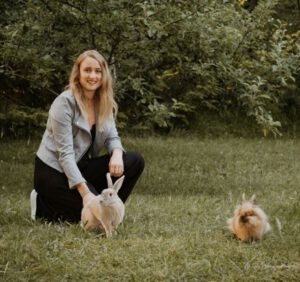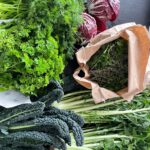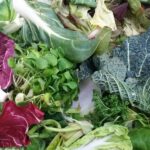Rabbits are herbivores that, due to their natural diet, have adapted to many plant compounds or even developed resistances. As a result, plants that are toxic to humans or to dogs and cats are often a natural part of a rabbit’s diet. Nevertheless, there are still highly poisonous plants that can cause serious poisoning in rabbits.
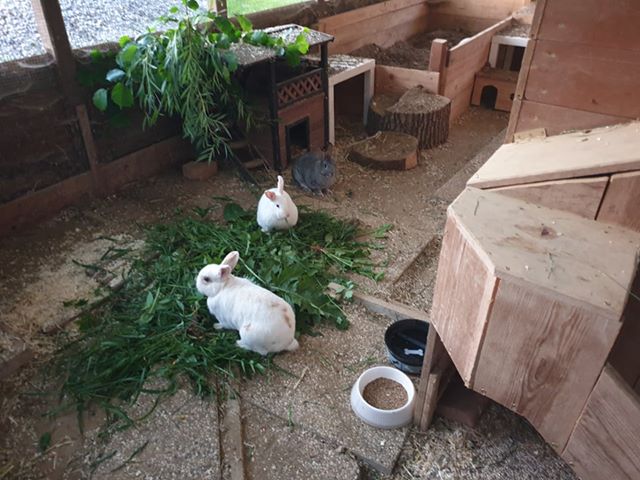
„In fact, it is very difficult to poison rabbits with plants. Experience has shown this to be true. Fear of poisonous plants can prevent owners from picking plants for their rabbits or allowing them access to a garden. That’s a pity, because a diet rich in fresh plants is very enjoyable for rabbits and has many health benefits. Wild plants also cost nothing, which can be important for owners who have many rabbits to feed.“
— Veterinarian Frances Harcourt-Brown
Contents
- The Most Common Sources of Poisoning in Rabbits
- Has My Rabbit Been Poisoned? Assessing Plants
- First Aid in Case of Suspected Poisoning
- Symptoms: How Does Poisoning Present in Rabbits?
- Diagnosis: The Veterinarian Assesses the Situation
- Therapy: How is Poisoning Treated?
- Breathing Problems
- Decontamination
- Decontamination of Skin and Fur
- Other Symptomatic Measures
The Most Common Sources of Poisoning in Rabbits
- Pesticides and weed killers: Insecticides, herbicides
- Rodenticides: Such as rat poison
- Incorrectly used or unsuitable medications (e.g. Fipronil – FRONTLINE® Spot On, or certain antibiotics such as Penicillin, Lincomycin, Ampicillin, Amoxicillin, Clindamycin, Cephalosporins, Erythromycin – especially when given orally instead of by injection)
- Household cleaning products: Choose mild, rabbit-safe options such as diluted citric acid
- Heavy metals: For example, paint that is chewed off surfaces
- Mould: Mouldy food, damp hay, etc.
- Highly toxic plants: Such as yew or autumn crocus found in hay
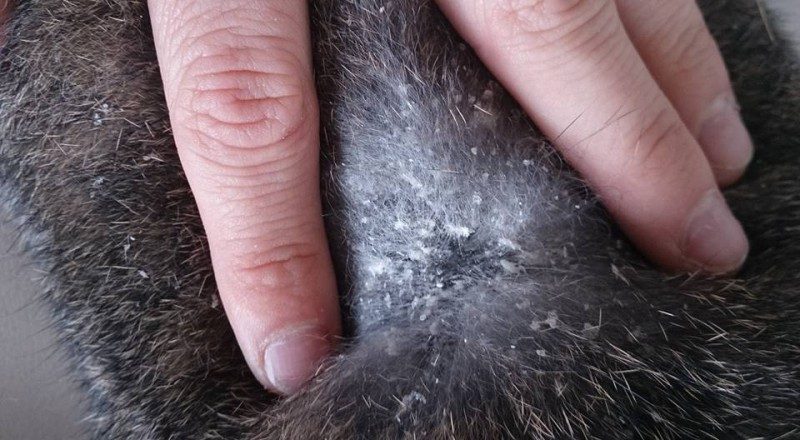
Has My Rabbit Been Poisoned? Assessing Plants
It is often not easy to determine whether the consumption of a particular plant will lead to poisoning in rabbits. Many plant toxicity lists for rabbits are based on the effects these plants have on humans or other animals, which can lead to serious misjudgments. In some cases, plants are considered “dangerous” because of their thorns (e.g., prickly sow-thistle) or their potential to cause skin irritation in humans (e.g., giant hogweed), even though they are often excellent food sources for rabbits.
That’s why we’ve taken the time to evaluate the toxicity of individual plants specifically for rabbits—based on scientific literature—and have reflected this in our plant lists:
- Wild plant list
- Highly toxic plants
- Vegetable list
- Herb list
- Branch list
- Fruit list
- Seed list
- Garden plant list
- Houseplant list
First Aid in Case of Suspected Poisoning
- Remove the rabbit from the source of poison: First, remove any toxic food or contact poison completely, and take the rabbit out of the contaminated area immediately.
- What exactly was ingested and how much? Take the packaging, exact product name, or the whole plant (plus photos if possible) with you to the vet. Note down exactly how much the rabbit has eaten or been in contact with—bring a reference (e.g. half a leaf, if the other half was eaten).
- If there are any residues on the rabbit’s body, it is recommended to gently clean them off (e.g. with lukewarm water) to prevent further ingestion through grooming.
- If the poison was ingested: Offer plenty of fresh greens on the way to the vet to help dilute the toxin in the digestive system.
- If possible: Activated charcoal (1–3 g per kg of body weight; dilute 1 g of charcoal in 5–10 ml of water and administer into the mouth) and subcutaneous fluids (for experienced owners only) can be given as first aid before the journey to the vet.
- Lactulose can also be used in some cases of poisoning as a first-aid measure.
- Seek veterinary help immediately—day or night. Every minute counts and can make the difference between life and death.

Symptoms: How Does Poisoning Present in Rabbits?
- Excessive drooling, foaming at the mouth
- Increased drinking (polydipsia): the rabbit suddenly drinks a lot.
⚠️ Note: Rabbits may also drink more when they stop eating, so this symptom should be evaluated carefully! - Apathy, withdrawn behavior
- Refusal to eat, poor food intake
- Diarrhea or constipation
- Blood in the urine (hematuria), bleeding from body openings (e.g., nosebleeds)
- Fever or low body temperature (hypothermia)
- Changes in pupil size or reaction
- Irregular or altered heartbeat
- Breathing difficulties
- Muscle tremors, seizures, epileptic fits
- Signs of paralysis
- Drowsiness or unconsciousness
In cases of slow, chronic poisoning, different symptoms may appear, such as:
- Changes in blood test results (e.g., liver and kidney values)
- Weight loss
- Apathy, withdrawn behavior
- Skin and coat issues
- Hair loss
- Pale or bluish mucous membranes (cyanosis)
- Loss of appetite and gradual emaciation
Diagnosis: The Veterinarian Assesses the Situation
The veterinarian will ask questions about the toxin and its ingestion (e.g., which toxin, how it was ingested, how much was consumed, when it happened, and how often it occurred) in order to better assess the poisoning and initiate the necessary emergency measures.
The veterinarian may proceed with further investigations, especially a thorough examination of the animal, to rule out other potential causes. Often, additional tests, such as blood work or neurological exams, are necessary.
If the animal has passed away, a post-mortem examination can help identify the toxin or other causes, helping to protect other animals.
If the poisoning might have legal consequences (e.g., the intentional placement of poisoned bait), the deceased animal and all evidence must be collected and sent for laboratory analysis. If the rabbit survives, the veterinarian will involve a colleague as a witness and carefully document all investigations and findings. Additionally, the veterinarian will advise on how to properly collect samples for future reference.
Therapy: How is Poisoning Treated?
The Zurich Poison Database provides extensive information on various toxins (including toxic doses, symptoms of poisoning, and recommended treatments) and should be consulted when treating poisoning cases.
For some toxins, there are specific antidotes (see below), which can be administered to the animal and help counteract the effects of the toxin (these antidotes can be found in the Zurich Poison Database). Otherwise, rabbits are treated symptomatically, meaning the treatment will focus on supporting the animal based on the symptoms and the specific effects of the toxin:
Breathing Problems
- The airways are kept clear, and they may be cleaned if necessary. Mucus is removed from the mouth, and aspiration pneumonia (inhalation into the trachea) is prevented.
- Oxygen may be provided, and in extreme cases, artificial respiration (mask or tube) may be required.
Circulatory Problems
Fluid and electrolyte balance are maintained to stabilize circulation:
- 50-100 ml of Ringer’s lactate per kg body weight subcutaneously (s.c.) 1-2 times daily.
- 20 ml/kg body weight as a bolus intravenously (i.v.), possibly repeated, followed by 80-100 ml/kg body weight per day intravenously (i.v.).
Twitching and Seizures
Ensure the environment is safe to prevent injury during convulsions.
- Midazolam (0.5-2 mg/kg body weight intramuscularly (i.m.))
- Neuroleptics should not be given in poisoning cases!
Kidney Failure
Fluid administration through infusions (as mentioned above for circulatory support).
- Furosemide: 2-5 mg/kg body weight orally (p.o.), subcutaneously (s.c.), intramuscularly (i.m.), or intravenously (i.v.) 1-2 times daily, but only after the infusion.
Decontamination
Most Important Measure: Activated Charcoal
Due to the risk of constipation in rabbits, it is best to administer activated charcoal in combination with laxatives (e.g., lactulose).
- Carbo medicinalis: 1-3 g per kg body weight orally (p.o.).
- Dissolve 1 g of charcoal in 5-10 ml of water.
- Repeat administration every 6-8 hours.
Important Note: Activated charcoal works for nearly all toxins; however, it is not effective for alcohols, cyanides, nitrites, alkalis, or acids.
Activated Charcoal
Activated charcoal can reduce or even eliminate the effect of any medications administered orally, meaning that medications must be given via injection instead.
- Important Note: Charcoal made from wood, burnt bread, etc., is ineffective.
Laxatives
Laxatives are used to stimulate the gastrointestinal tract and help the toxin pass through the body more quickly, reducing absorption.
- Paraffin oil: Dosage according to small animal guidelines: 1-2 ml per kg body weight orally (p.o.)—do not give with activated charcoal.
- Lactulose: 2-3 ml per kg body weight, 2-3 times daily, administered orally.
Decontamination of Skin and Fur
Use Gloves and Protective Clothing!
Organic solvents or petroleum distillates must not be used for decontamination.
Eyes, Mucous Membranes:
Rinse thoroughly with plenty of lukewarm water for at least 10 minutes.
Water-soluble toxins, caustic substances:
Bathe the animal with plenty of lukewarm tap water (body temperature), rinse for at least 10 minutes, and dry thoroughly.
Fat-soluble toxins:
Bathe with lukewarm water (body temperature) and use alkali-free soap (if necessary, alternate with cooking oil). Rinse thoroughly and dry.
Shaving is often preferable to washing as it does not damage the skin’s protective function.
Dry powders:
Vacuum or brush off the powder.
| Toxin | Antidote | Dosage of antidote |
| Lead | Calcium Disodium EDTA | 27.5 mg/kg body weight, dilute 10 mg in 1 ml of NaCl, administered subcutaneously (s.c.) 2-4 times daily for 5 days, repeat if necessary. |
| Carbamate (often found in insecticides, fungicides, and herbicides) | Glycopyrrolate, Atropine sulfate | Atropine: 10 mg/kg body weight subcutaneously (s.c.), every 20 minutes. 30-50% of rabbits possess an enzyme (atropinesterase) that neutralizes the effects of atropine. Therefore, the use of glycopyrrolate is preferred for this species. |
| Vitamin D3 (Cholecalciferol) | Salmon Calcitonin | There are no dosage guidelines available for rabbits. |
| Nitrite | Vitamin C (Ascorbic Acid) | |
| Rat Poison and Damp/Moldy Hay (Coumarin Derivatives) | Vitamin K1 | 1-10 mg/kg body weight i.m., as needed. |
| Copper (Cu) | D-Penicillamine | There are no dosage guidelines available for rabbits. |
| Organophosphates | Glycopyrrolate, Atropine | Atropine: 10 mg/kg body weight s.c., every 20 minutes. 30-50% of rabbits possess an enzyme (atropinesterase) that neutralizes its effects. Therefore, the use of glycopyrrolate is preferred in this species. |
| Zinc | Calcium Disodium EDTA | 27.5 mg/kg body weight, dilute 10 mg in 1 ml of NaCl, s.c., 2-4 times daily, for 5 days, repeat if necessary. |
Other Symptomatic Measures
Metabolic Acidosis
- Sodium bicarbonate: 2 mg/kg body weight intraperitoneally (i.p.) or intravenously (i.v.) in case of ketoacidosis.
Temperature Regulation
- Heating: Use of a Snuggle Safe, heating pads, etc.
- Cooling: Apply cold water to the limbs, or cool the ears with cold water.
Antibiotic Therapy
- In cases of erosions, pulmonary edema, aspiration, etc., use broad-spectrum antibiotics, such as:
- Enrofloxacin: 5-10 (-20) mg/kg body weight orally (p.o.), subcutaneously (s.c.), 1-2 times daily.
Gastrointestinal Protection
- Sucralfate: 1 pinch (measuring spoon), 3-4 times daily.
- Ranitidine: 1 mg/kg body weight orally (p.o.).
- Cimetidine: 5-10 mg/kg body weight orally (p.o.) or intramuscularly (i.m.), every 6-12 hours.
Pain Management
- In cases of pain:
- Meloxicam: 0.5-1 mg/kg body weight subcutaneously (s.c.), orally (p.o.), once or twice daily, reduce to a minimum dose after 2-3 days.
- Carprofen: 5 mg/kg body weight orally (p.o.), twice daily; 2-4 mg/kg body weight subcutaneously (s.c.) or intramuscularly (i.m.), once daily.
Liver Protection
- For toxins affecting the liver:
- Milk Thistle Preparations.
- Vitamin B (infusions) (e.g., Amynin).
Why Do Rabbits Poison Themselves?
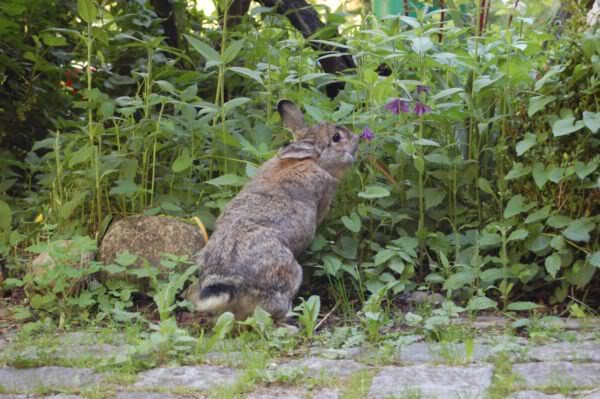
Wild rabbits are very good at selecting plants, as they take a small test bite, assess it, and only consume non-toxic amounts (see here). Our domestic rabbits have this innate ability as well, but due to various environmental factors, they may not always be able to exercise it perfectly:
- Food Scarcity: If the rabbit does not have a choice and only toxic plants are available, it may eat them out of hunger or boredom. For example, if rabbits are housed in an enclosure without fresh food and are fed yew branches.
- Processed Food: Through heating, drying, and other processes, the smell, taste, and texture of food change, which makes selection more difficult. For example, if autumn crocus is fed in hay, it smells and tastes differently from the fresh plant, and may therefore be eaten unknowingly.
- Artificial Additives: Artificial flavors and taste enhancers in commercial dry food can greatly impair or prevent the rabbit’s ability to select suitable plants.
- Confinement: Rabbits are highly intelligent animals, but due to housing errors, they are often confined to stalls or cages (e.g., at night, because it’s assumed they sleep at night, even though their active periods are primarily at night). Due to boredom and lack of movement and enrichment, rabbits may end up eating inappropriate or toxic plants.
- Lack of Familiarization: If a rabbit is fed pellets and hay, it must be gradually introduced to a variety of plants in order to make use of its innate instincts.
Sources include:
Giftdatenbank Zürich www.clinitox.ch
Löscher, W. et al. (2016): Lehrbuch der Pharmakologie und Toxikologie für die Veterinärmedizin, Enke Verlag
Ewringmann, A. (2016): Leitsymptome beim Kaninchen. Enke Verlag
Gabrisch, K.; Zwart, P. (2014): Krankheiten der Heimtiere. Schlütersche


